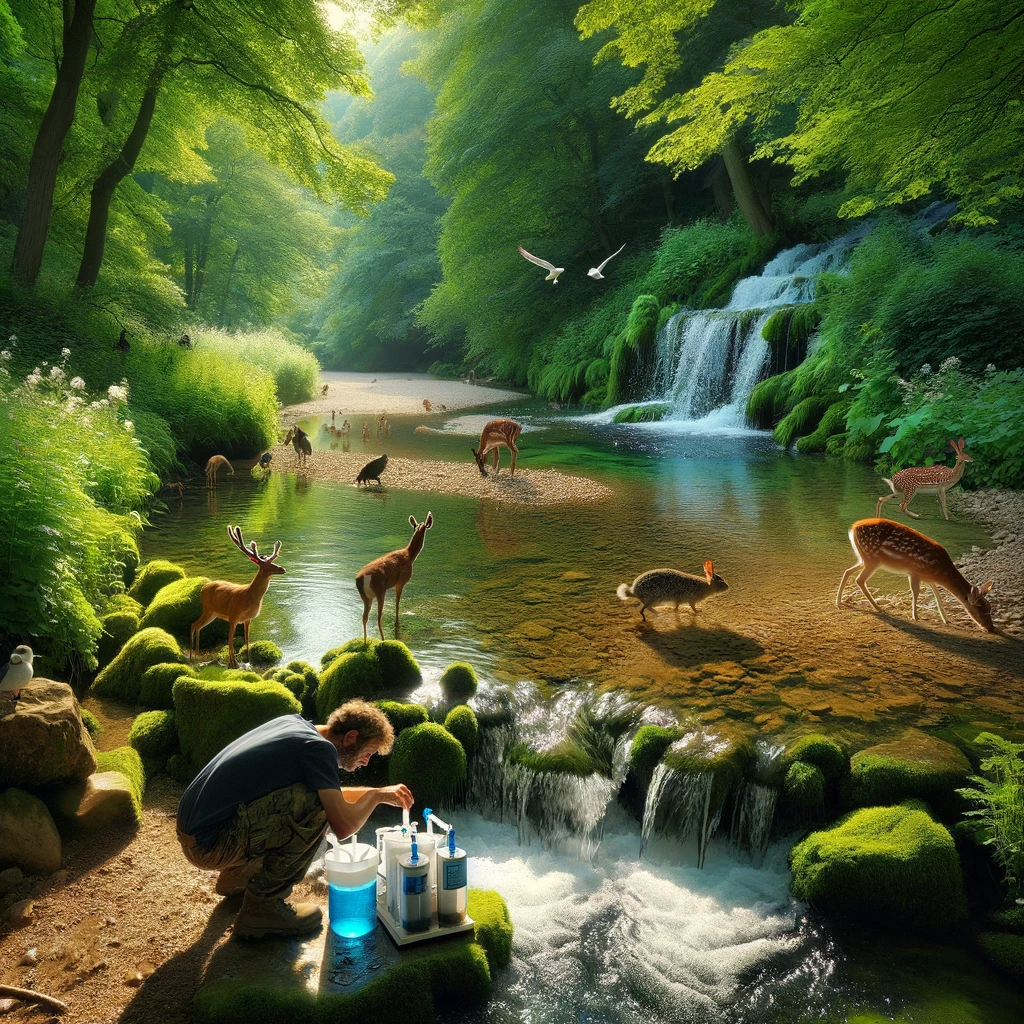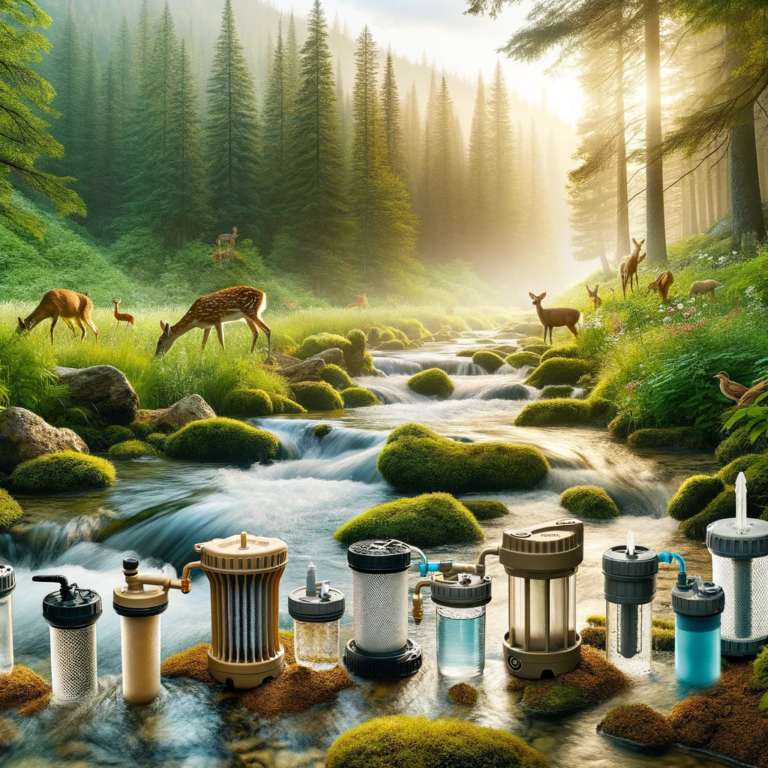Wild Water Wits: Sourcing H2O in the Wild
Sourcing H2O in the Wild: You might think finding water in the wild is hit or miss, but ‘Wild Water Wits: Sourcing H2O in the Wild’ will equip you with the know-how to turn the odds in your favor.
As you embrace your quest for freedom, let this guide be your roadmap to sourcing water wherever your adventures take you. It’s more than just survival; it’s about understanding the whispers of nature that lead to life-sustaining H2O.
You’ll learn to read the land like a book, from the subtle signs that betray hidden springs to the art of harvesting dew. With practical advice on extracting moisture from plants to innovative methods for groundwater retrieval, this manual doesn’t just show you the ropes; it hands you the reins to water independence.
Trust your instincts, master these techniques, and stay hydrated as you explore the vast playground that is the wilderness.
Key Takeaways
- Streams or rivers are reliable water sources, less likely to have contaminants.
- Look for a ribbon of vegetation that often flanks waterways.
- Wildlife patterns can lead to a water source.
- Boil standing water from lakes or ponds before drinking.
Understanding Natural Water Sources
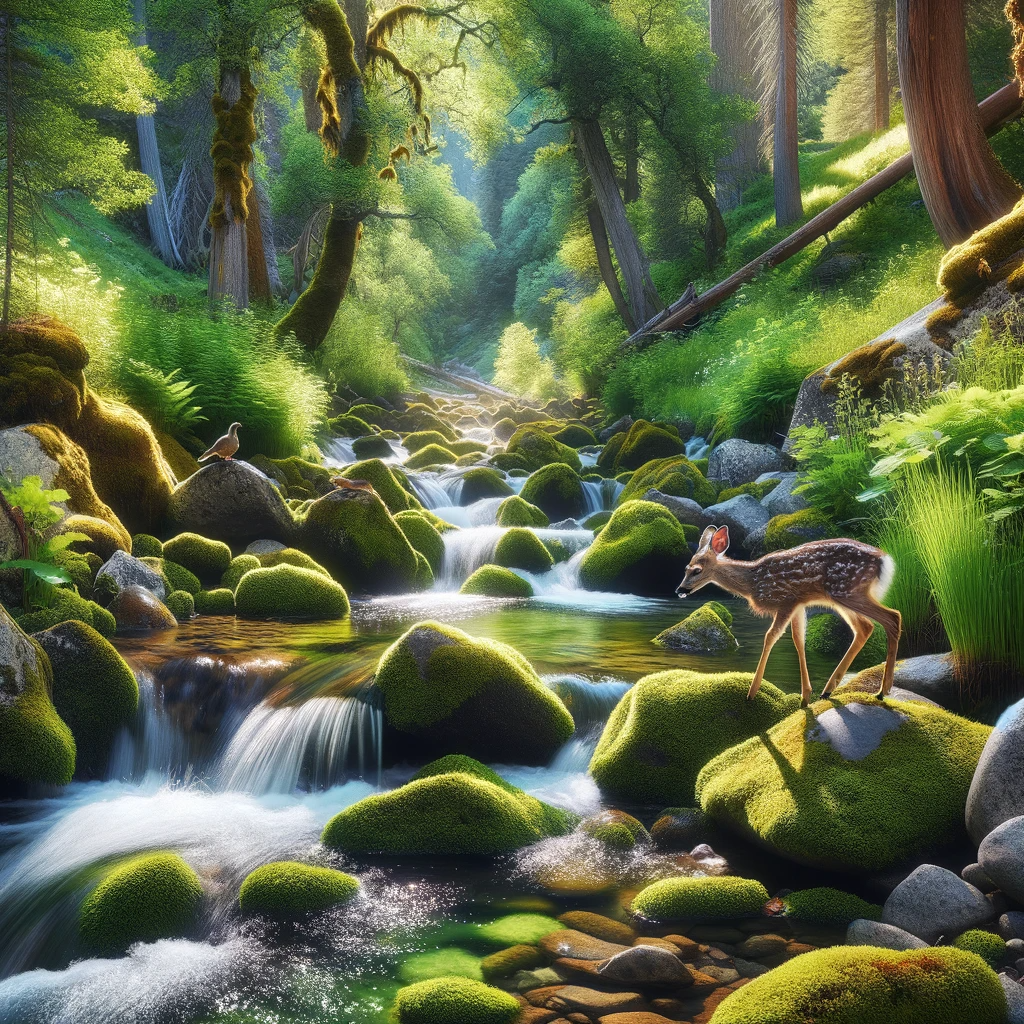
In your quest for hydration, it’s essential to comprehend the various natural water sources you may encounter, from streams to dew-covered vegetation. Streams or rivers are often the most reliable water sources, providing a continuous flow that’s less likely to harbor contaminants than stagnant water. When seeking out a stream, listen for the subtle whisper of flowing water and scan the landscape for a telltale ribbon of vegetation that often flanks waterways.
If you’re tracking a water source, pay close attention to wildlife patterns. Animals instinctively head towards water, so following their tracks can often lead you to a stream or hidden pond. In tropical climates, a cacophony of bird calls or a cluster of insects like mosquitoes and dragonflies might hint at a nearby water source. These signs are nature’s way of guiding you to sustenance.
When you come across a potential water source, approach with an analytical mind. Assess the surroundings for signs of contamination or pollution. Avoid water near human settlements or agricultural land, where the risk of chemical runoff is high. Similarly, standing water found in lakes, wells, or ponds must be treated with caution. Although these sources can provide the water you crave, they’re also breeding grounds for pathogens. Before you take a sip, you’ll need to boil the water to eliminate any harmful organisms.
Locating Surface Water Supplies
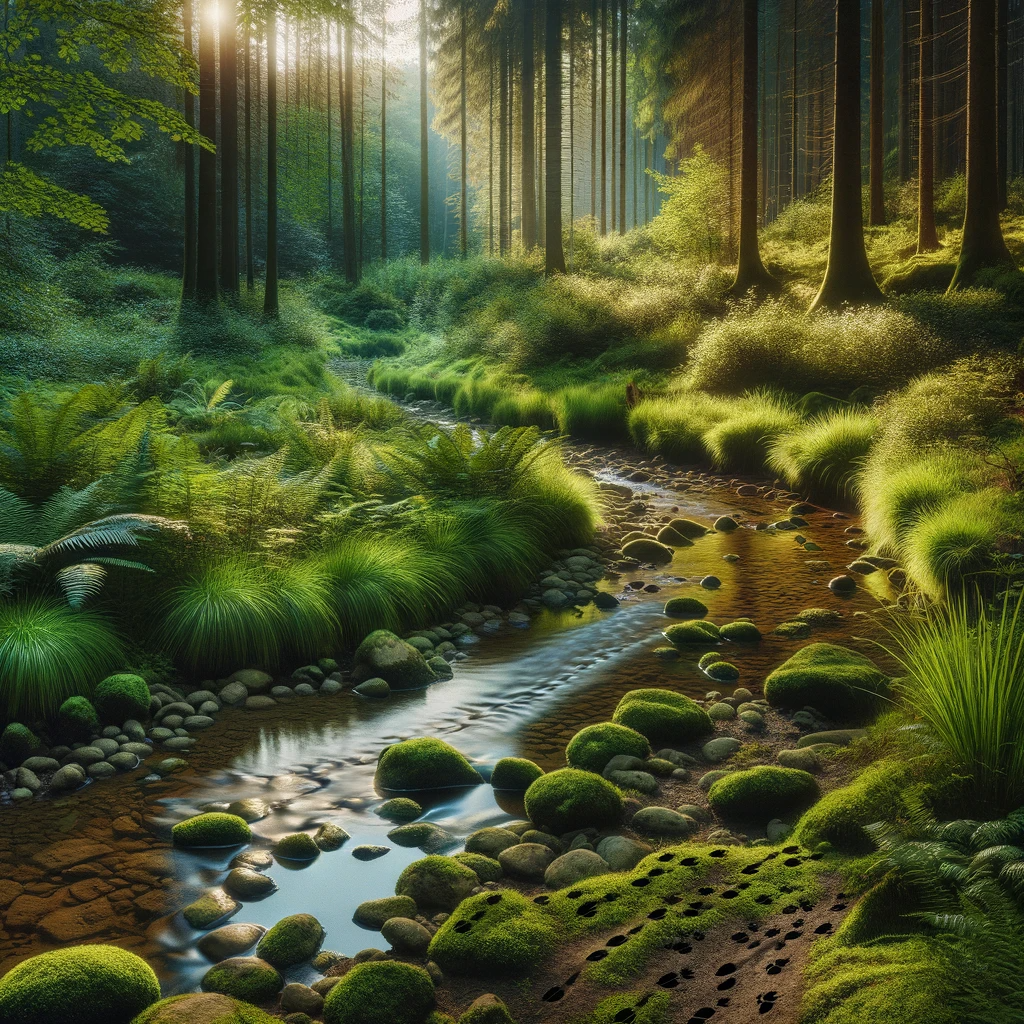
Moving on from understanding natural water sources, you’ll find that recognizing the signs of surface water is crucial for staying hydrated in the wilderness. Your quest to drink water is a primal one, tapping into the innate skills that past generations honed. Start by pausing and lending an ear to your surroundings—rushing water is a telltale sound that can guide you to a life-sustaining stream. Actively listen, especially during the quieter dawn and dusk hours, and let the natural flow of running water beckon you.
Insects, though often considered pests, are your unwitting scouts in the wild. Swarms of mosquitoes and dragonflies aren’t only indicators of a water source but also signal that you’re closer to quenching your thirst. Be analytical in your approach: note the increased activity of these insects, particularly in humid, tropical climates where water is paramount.
Don’t overlook the evidence left by wildlife. Animals are instinctive in their survival, and their tracks can be your roadmap to hydration. Follow these natural guides with a keen eye; they’re likely heading to a nearby water cache. Remember, though, that while these animal-made paths can lead to water, they don’t guarantee its purity. Always boil standing water, whether from lakes or ponds, before you drink to ensure it’s safe.
Lastly, observe the avian patterns at daybreak and twilight. Birds, in their daily routines, can inadvertently direct you to water. Their flight paths, especially when converging, can point you to a water source you might otherwise have missed. Embrace this freedom to roam and read nature’s signs—they’re the keys to unlocking the hydration that the wilderness conceals.
Collecting Rain and Condensation
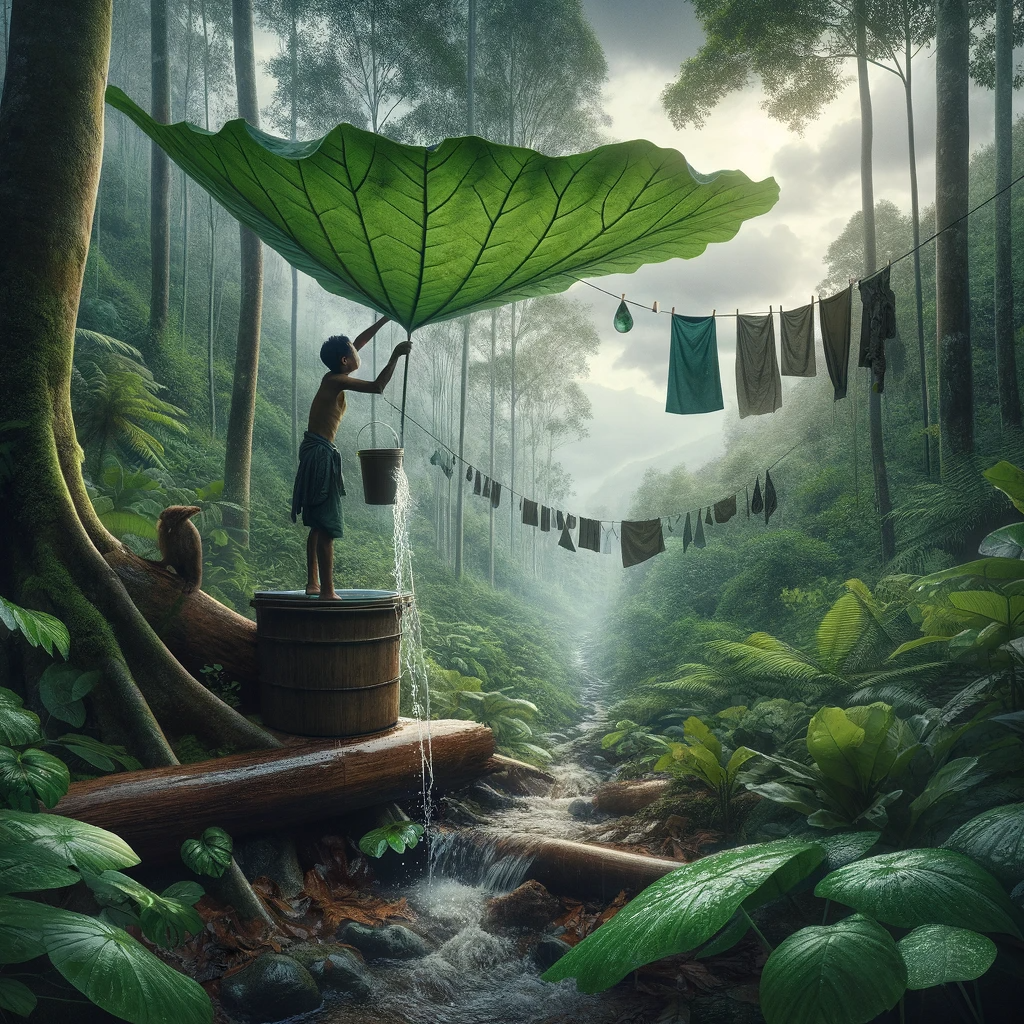
When it’s raining, you’ve got a golden opportunity to collect clean water. Set up a simple rainwater harvesting system by tying a tarp with a central depression to trees, guiding precious drops directly into your container.
To maximize efficiency, consider how condensation traps can supplement your water supply during drier conditions.
Rainwater Harvesting Techniques
As you venture into the wilderness, mastering rainwater harvesting techniques ensures that you’ll never be without a critical supply of H2O. Setting up a makeshift collection system can be your first choice when seeking to secure water for extended periods. Use a poncho, tarp, or plastic sheet and tie it to trees, creating a depression in the center. This will direct rainwater into a container placed underneath. Always have additional containers on hand for surplus rainwater, and ensure its clarity, an indication of safety for consumption. Here’s a practical guide to get you started:
| Material | Purpose | Tips |
|---|---|---|
| Poncho/Tarp | Collection Surface | Create central depression |
| Container | Storage | Place under spout |
| Additional | Overflow Collection | Keep nearby |
| Observation | Water Quality Check | Look for clear color |
| DIY Projects | Enhanced Experience | Consider a handwashing station |
With these techniques, you’ll remain hydrated and self-sufficient in the wild.
Condensation Traps Efficiency
In arid environments, constructing an underground still boosts your ability to collect precious water through condensation. This method is practical and efficient, tapping into a natural resource without the need for constant rainfall.
To ensure the effectiveness of your condensation trap, dig a pit deep enough to allow for ample moisture accumulation. Place a clean container in the pit’s center to collect the safe water.
Cover the pit tightly with a plastic sheet, securing the edges with soil or rocks to prevent vapor escape. Make sure to place a small rock in the center of the sheet above the container, creating a low point for condensation to drip into.
With patience, you’ll have a sustainable source of water in even the driest of terrains.
Identifying Edible Plant Moisture
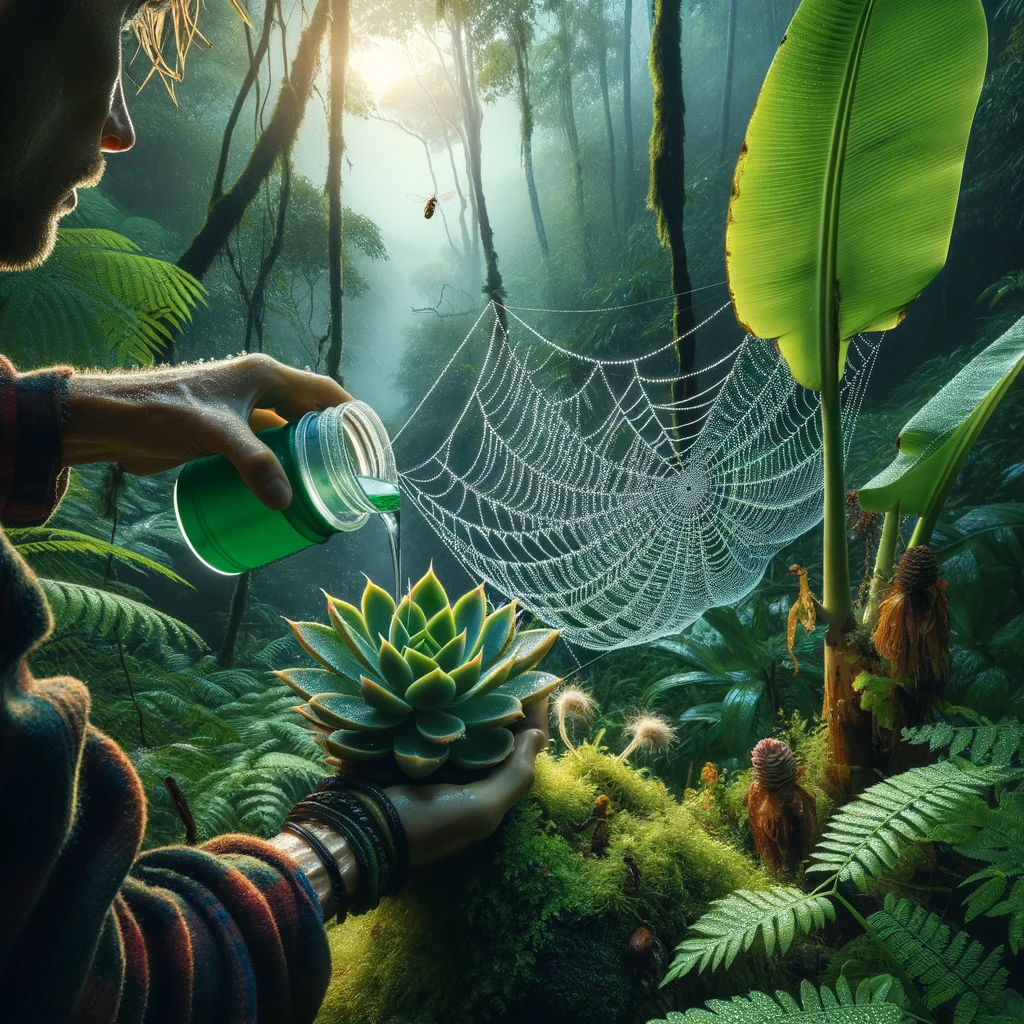
While searching for hydration, you’ll find that certain plants offer safe moisture, such as the clear liquid found in the inner pockets of banana and plantain trees. Harnessing this plant moisture can be a vital skill when drinking water isn’t readily available from a stream or other conventional sources. However, it’s crucial to identify and use only non-toxic plants to avoid detrimental health effects.
Here are practical methods for tapping into plant hydration:
- Banana and Plantain Trees
- Locate a healthy tree and cut into its trunk to access the inner pockets.
- Extract the clear liquid cautiously; this is pure water that’s been filtered by the plant.
- Bamboo
- Cut a notch at the base of a mature stalk to collect water.
- Ensure the bamboo is green and alive to avoid stagnant water.
When you’re aiming for autonomy in the wild, knowing how to distinguish between safe and unsafe sources of moisture is crucial. Always consider the following:
- Color and Smell
- Clear and odorless water is generally an indicator of safe drinking water.
- Any discoloration or odor suggests contamination; avoid using this water.
- Plant Selection
- Opt for known, non-toxic plants to ensure the water is safe.
- Avoid all cacti, as their moisture can induce gastrointestinal distress.
Ground Water Extraction Techniques
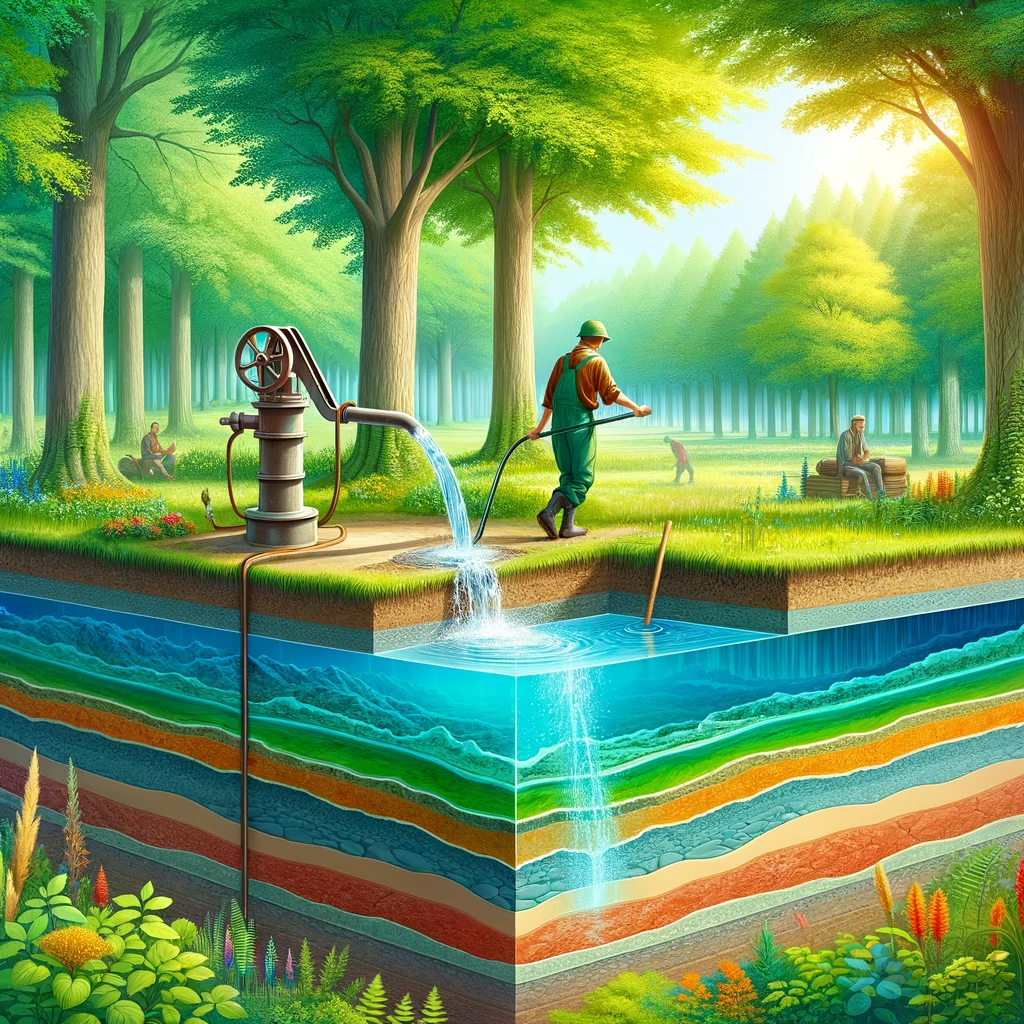
After mastering the art of tapping into plant moisture, you’ll find that extracting groundwater using an underground still is another effective method for securing a clean water supply in the wild. This ground water extraction technique hinges on the natural process of condensation and can be a lifeline when surface water is scarce.
Start by selecting a location where the soil appears damp, indicating a higher likelihood of water below. Dig a pit about three feet wide and two feet deep, adjusting as necessary based on the terrain and your assessment of soil moisture levels. In the heart of this pit, place a clean container to collect the water due.
Next, gather green vegetation—small plants or lichens work well—and spread it around the container. These plants will add moisture to the air within the pit. Now, cover the pit with a clear plastic sheet, securing the edges with rocks or soil to prevent air escape. Place a small stone in the center of the plastic sheet, directly above the container, to create a low point where condensation can accumulate and drip.
As the sun heats the ground, water will evaporate from the soil and plants, condense on the underside of the plastic, and water due will trickle down into your container. It’s a slow process, but patience pays off with a vital supply of potable water.
Once you’ve gathered the water, cap the container to prevent contamination and re-deploy the still in another spot if needed. Remember, avoid the temptation of cacti as a water source; their fluid can be more harmful than hydrating.
With these ground water extraction techniques, you’re equipped to quench your thirst and maintain your freedom in the wild.
Natural Water Purification Methods
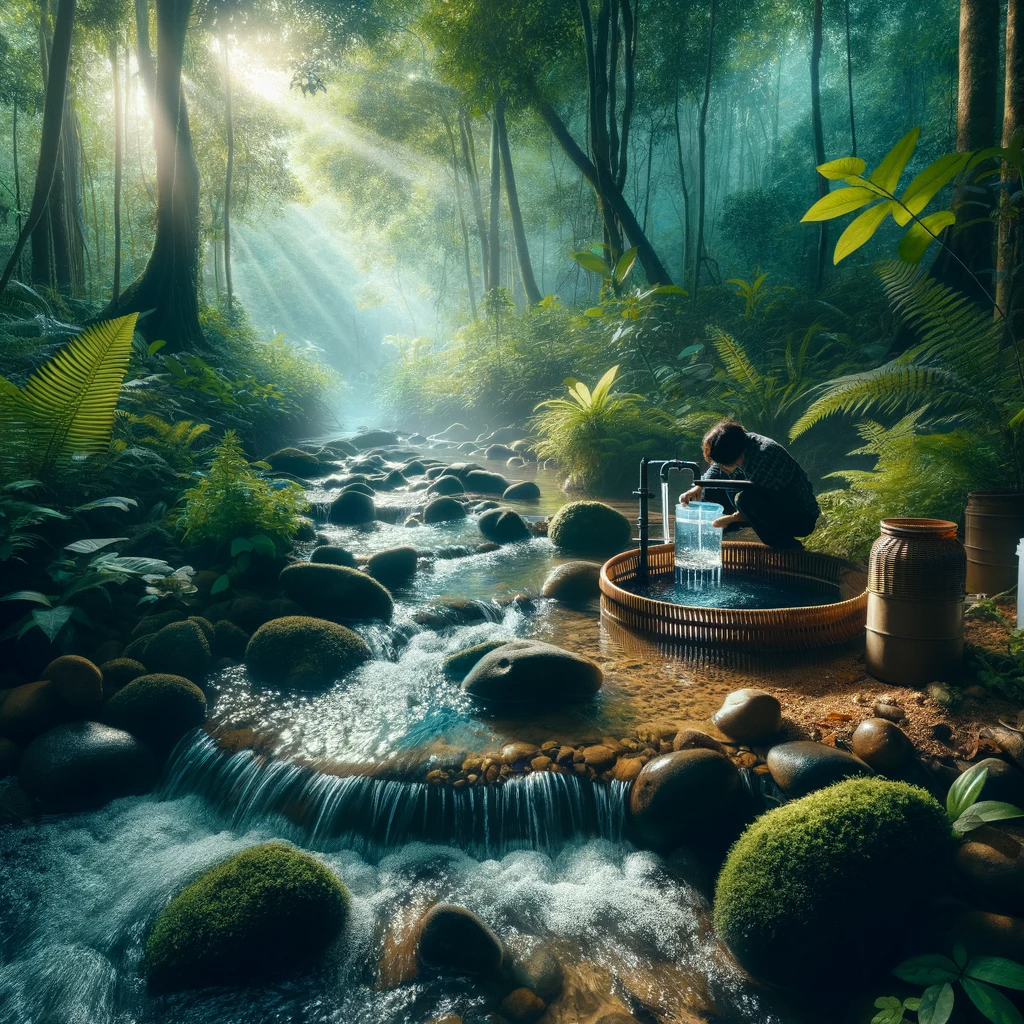
You’ll often need to purify collected water, as even the clearest sources can harbor pathogens. In the wild, you can’t just take a sip from any stream or pond without considering the potential risks. But don’t let that deter you. There are natural water purification methods to make your water safe to drink without needing complex equipment or chemicals.
Here are some effective natural water purification methods:
- Boiling
- Collect water in a metal container and bring it to a rolling boil for at least one minute. At higher altitudes, extend this time due to lower boiling points.
- Solar Disinfection (SODIS)
- Fill a clear plastic bottle with water and place it under direct sunlight for six hours. The UV rays will help eliminate harmful microorganisms.
- Sand and Charcoal Filtration
- Construct a makeshift filter using layers of cloth, sand, and charcoal. This can remove particulates and some contaminants.
- Natural Plant Alum
- Use crushed seeds from the Moringa oleifera tree, which act as a coagulant to bind particulates, making them easier to filter out.
- Transpiration Bags
- Place a clear plastic bag over a leafy branch and seal it. The water vapor transpired by the leaves will condense, collect, and can be harvested.
When using these methods, it’s crucial to be analytical and practical. For instance, while SODIS is effective, it won’t work on cloudy days or for chemically contaminated water. Likewise, boiling might kill pathogens but doesn’t remove chemical pollutants. Always consider your environment and resources to choose the most suitable method.
Embrace these natural water purification methods to ensure your freedom and safety in the wild. They’re your ticket to hydration independence, allowing you to thrive wherever adventure takes you.
Signs of Potable Water Indicators
@ Midjourney AI Image Prompt: /imagine prompt:Illustrate a clear stream with wildlife, lush greenery, birds flying overhead, and a series of rocks indicating a natural filtration system, all set against a backdrop of a vibrant forest ecosystem. –v 5.2 –ar 16:9
To find drinkable water in the wild, you need to recognize certain natural indicators that suggest the presence of a safe water source. Sound is a reliable ally; if you stop and listen, the murmur of moving water can lead you to a stream or river, often the cleanest water available, as the motion helps to filter and purify it. However, you shouldn’t assume all moving water is safe to drink without proper treatment.
Insects can be a nuisance, but they’re also a beacon for hydration. Swarms of mosquitoes and dragonflies are not just a signal to cover up; they often mean water is close at hand. Still, remember to treat the water, as these insect hot spots can harbor pathogens.
You’ll also want to pay attention to wildlife. Animal tracks can be a highway to hydration, leading you to sources that might otherwise remain hidden. Additionally, observing birds, especially during dawn and dusk, can point you to water. These creatures follow routines tied to survival, and water is a crucial part of their daily circuit.
Here’s a concise guide to help you remember these indicators:
| Indicator | Implication |
|---|---|
| Rushing water sounds | Nearby moving water source |
| Insect swarms | Standing water nearby (treat before use) |
| Animal tracks & birds | Potential paths to water sources |
When you’re out in the wild, longing for the freedom from civilization’s grip, knowledge is your most valuable tool. Recognizing these signs could mean the difference between dehydration and quenching your thirst with nature’s provision. Stay observant, analyze your surroundings, and you’ll find the water you need to keep exploring.
Sourcing H2O in the Wild: Frequently Asked Questions
How Can I Safely Store and Transport Water I’ve Found in the Wild to Prevent Contamination?
To ensure your water stays clean, choose containers wisely; opt for UV-resistant bottles for added protection.
UV sterilization can be a practical method to purify it before sealing it up.
Always use clean, sealable containers to prevent contaminants from entering.
Remember, your freedom to roam requires safeguarding your health, and that starts with how you handle your water.
Stay vigilant and stay hydrated out there.
Are There Any Mobile Apps or Tech Gadgets That Can Help Me Locate Water Sources When I’m off the Grid?
You’re navigating uncharted territory, much like a ship seeking a beacon in foggy seas.
Thankfully, water finding apps and survival gadgets can be your lighthouse.
Apps like ‘Water Finder’ use your phone’s GPS to pinpoint nearby water sources, while portable tech like ‘Lifesaver bottles’ ensure you’ve got clean water on the go.
These tools empower your thirst for adventure, providing practical solutions to quench your need for hydration and freedom.
How Do I Measure the Ph Level of Natural Water, and What Ph Should I Look for to Ensure the Water Is Safe to Drink?
To measure the pH of natural water, you’ll need water testing kits with pH indicators. These kits are simple: just collect a sample and follow the instructions. The indicators will change color to reveal the water’s pH. Look for a pH between 6.5 and 8.5; that’s generally safe for drinking.
What Emergency Water Filtration Methods Can I Use if I Don’t Have Access to Commercial Water Purification Tools?
If you’re stuck without commercial purifiers, you can rely on solar distillation or charcoal filtering for emergency water filtration.
Create a solar still with a plastic sheet to condense and collect clean water.
Alternatively, use charcoal from your fire, sand, and stones to make a natural filter.
Both methods are practical, harnessing readily available resources, giving you the freedom to safely hydrate wherever you find yourself.
Can I Rely on Animal Behavior or Certain Insects to Lead Me to a Water Source, and if So, What Should I Look For?
Indeed, you can look to nature for guidance. Animal trails often lead to water; a convergence of paths can indicate a nearby source.
Also, dense vegetation patches may suggest moisture presence, as plants thrive where water’s abundant. Analyze your surroundings, follow these signs, and you’ll likely find the water you seek.
Conclusion
In your quest for hydration, trusting nature’s cues is key. Surface signs often lead to life-saving sips, while rain and plants offer a covert cache of moisture.
Digging may reveal hidden aquifers, but remember, purification is non-negotiable. Analyze each water source—clear doesn’t mean clean. Your wild water wits could mean the difference between a refreshing drink and a risky gulp.
Stay sharp, stay hydrated, and let nature’s whispers guide your water wisdom.
Helpful Links

